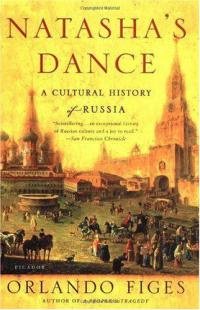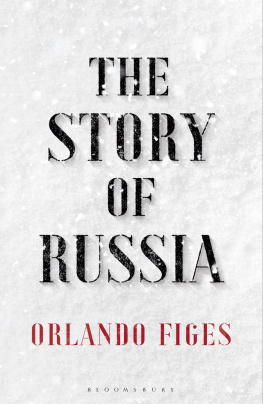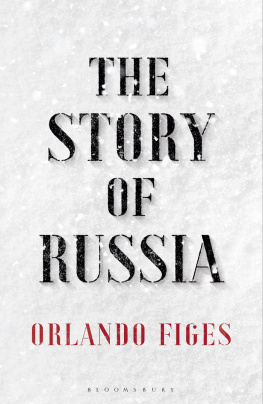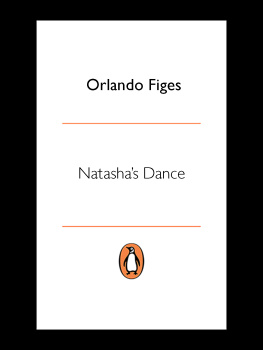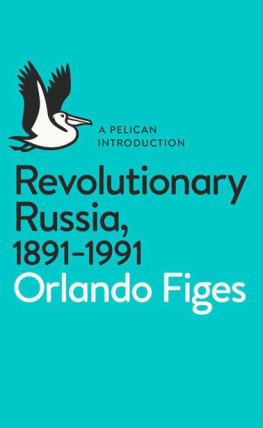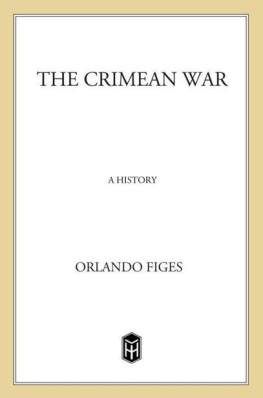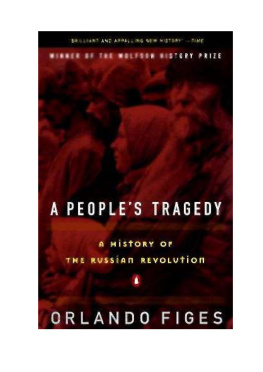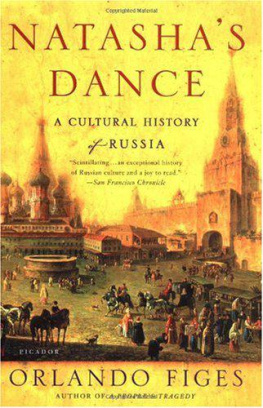Natasha's Dance Orlando Figes New York : Metropolitan Books, 2002. (2003) Tags: Non Fiction
Non Fictionttt
SUMMARY:
"Orlando Figes's A People's Tragedy, wrote Eric Hobsbawm, did "more to help us understand the Russian Revolution than any other book I know." Now, in Natasha's Dance, this internationally renowned historian does the same for Russian culture, summoning the myriad elements that formed a nation and held it together." "Beginning in the eighteenth century with the building of St. Petersburg - a "window on the West" - and culminating with the challenges posed to Russian identity by the Soviet regime, Figes examines how writers, artists, and musicians grappled with the idea of Russia itself - its, character, spiritual essence, history, and destiny. What did it mean to be Russian - an illiterate serf or an imperial courtier? And where was the true Russia - in Europe or in Asia? Figes skillfully interweaves the great works - by Dostoevsky and Chekhov, Stravinsky and Chagall - with folk embroidery, peasant songs, religious icons, and all the customs of daily life, from eating, drinking, and bathing habits to beliefs about death and the spirit world. His fascinating characters range high and low; the revered Tolstoy, who left his deathbed to search the wilderness for the Kingdom of God; the serf girl Praskovya, who became Russian opera's first superstar, won the heart of her owner, and shocked society by becoming his wife; the composer Stravinsky, who returned to Russia after fifty years in the West and discovered that the homeland the had left had never left his heart."--BOOK JACKET.
Orlando Figes
NATASHAS DANCE
A Cultural History of Russia
Copyright 2002 by Orlando Figes
ISBN: 08050-5783-8
For Lydia and Alice
Contents
List of Illustrations and Photographic Acknowledgements - ix
Notes on the Maps and Text - xv
Maps - xviii
Introduction - xxv
1 EUROPEAN RUSSIA - I
2. CHILDREN OF I 8 I 2. - 69
3. MOSCOW! MOSCOW! - 147
4. THE PEASANT MARRIAGE - 217
5. IN SEARCH OF THE RUSSIAN SOUL - 289
6. DESCENDANTS OF GENGHIZ KHAN - 355
7. RUSSIA THROUGH THE SOVIET LENS - 431
8. RUSSIA ABROAD - 523
List of Illustrations
and Photographic
Acknowledgements
Every effort has been made to contact all copyright holders. The publishers will be happy to make good in future editions any errors or omissions brought to their attention.
CHAPTER OPENERS
1. Benjamin Paterssen: Vue de la grande parade au Palais de lEmpereur
Alexandre 1er a St Petersburg, c. 1803. Ashmolean Museum, Oxford
2. Adolphe Ladurnier: View of the White Hall in the Winter Palace,
St Petersburg, 1838. State Hermitage Museum, St Petersburg/
Petrushka, Moscow
3. St Basils Cathedral, Red Square, Moscow, during the late nineteenth
century (photo: David King Collection, London)
4. A typical one-street village in central Russia, c. 1910. Photograph
by Netta Peacock. Victoria Albert Museum Picture Library,
London
5. Natalia Goncharova: backdrop design for The Firebird (1916)
Victoria Albert Museum Picture Library, London
6. Scvthian figures: late nineteenth-centurv archaeological engraving
List of Illustrations and Photographic Acknowledgements
7. Anna Akhmatova at the Fountain House. Copyright Museum of Anna Akhmatova in the Fountain House, St Petersburg
8. Igor and Vera Stravinsky arriving at Sheremetevo Airport in Moscow, 21 September 1962. Reproduced from Igor and Vera Stravinsky, A Photograph Album 1921-1971 (London: Thames Hudson, 1982)
TEXT ILLUSTRATIONS
1. Shifting the huge granite rock for the pedestal of The Bronze Horseman. Engraving after a drawing by A. P. Davydov, 1782
2. Seventeenth-century Muscovite costumes. Engraving from Adam Olearius, Travels to Muscovy and Persia (Hamburg: Schleswig, 1669)
3. The Sheremetev theatre at Ostankino. Photograph copyright William C. Brumfield.
4. Gerard de la Barthe: A Cure Bath in Moscow, 1790. Pushkin Museum, Moscow (photo: AKG London)
5. The peasant prince: Sergei Volkonsky in Irkutsk. Daguerreotype by A. Lavignon, 1845 (photo: Novosti, London)
6. Alexei Venetsianov: Cleaning Beetroot, 1820. Copyright 2002, State Russian Museum, St Petersburg/Petrushka, Moscow
7. A wet nurse in traditional Russian dress. Early-twentieth-century photograph. Private collection. Reproduced from Chloe Oblensky, The Russian Empire: A Portrait in Photographs (London: Jonathan Cape, 1979)
8. Monument to the millennium of Russia in the square in front of St Sophias Cathedral, Novgorod. Photograph by Mikhail Mikeshin, early 1910s
9. Maria Volkonsky and her son Misha. Daguerreotype, 1862. Reproduced from Christine Sutherland, The Princess of Siberia: The Story of Maria Volkonsky and the Decembrist Exiles (London: Methuen, 1984)
10. Etienne-Maurice Falconet: The Bronze Horseman. Monument to Peter the Great, 1782 (photo: Hulton Archive, London)
11. Viktor Gartman: design tor the Kiev city gate (photo: Novosti/ Bridgeman Art Library, London)
12. Vladimir Shervud: Russian Museum, Red Square, Moscow. Photograph, early 1900s (photo: Alexander Meledin Collection/Mary Evans Picture Library, London)
13. Ilia Repin: sketches for The Volga Barge Haulers, 1870. National Gallery, Prague
14. Tolstoys estate at Yasnaya Polyana. Late-nineteenth-century photograph
15. Elena Polenova: Cat and Owl carved door, Abramtsevo workshop, early 1890s. Courtesy Izobrazitelnoe Iskusstvo, Moscow
16. Church at Abramtsevo. Designed by Viktor Vasnetsov, 1881-2. Photograph copyright William C. Brumfield
17. Gusli player. Reproduced from Chloe Oblensky, The Russian Empire: A Portrait in Photographs (London: Jonathan Cape, 1979)
18. Nikolai Roerich: costumes for the Adolescents in the first production of The Rite of Spring, Paris, 1913 (photo: Lebrecht Collection, London)
19. Stravinsky transcribes a folk song sung by a peasant gusli player on the porch of the Stravinsky house at Ustilug, 1909 (photo: Fondation Theodore Strawinsky/Lebrecht Collection, London)
20. Hermits at a monastery in northern Russia (photo: Popperfoto, Northampton)
21. Group of Komi people in typical clothing. Photograph, c. 1912, by S. I. Sergei. Reproduced from L. N. Molotova, Folk Art of the Russian Federation from the Ethnographical Museum of the Peoples of the U.S.S.R. (Leningrad: Khudozhnik RSFSR, 1981)
22. Vasily Kandinsky: sketches of buildings in the Komi region. From the Vologda Diary, 1889. Centre Pompidou, Musee National dArt Moderne, Paris. (Copyright Photo CNAC/MNAM Dist. RMN) AD AGP, Paris and DACS, London 2002
23. Masked Buriat shaman with drum, drumstick and horse-sticks. Photograph by Toumanoff, early 1900s
24. Watercolour copy of a lost self-portrait with Circassian sword and cloak by Mikhail Lermontov, 1837 (photo: Novosti, London)
25. Vladimir Stasov: study of the Russian letter B from a fourteenth-century manuscript of Novgorod. Reproduced in Stasov, Russkii naroodnyi ornament, 1872) (photo copyright British Library, London [ref. 7743])
26. Vladimir Stasov: title page of Rimsky-Korsakovs opera score Sadko, 1897. Photograph copyright British Library, London [ref. G.1073.a]
27. Akhmatova and Punin in the courtyard of the Fountain House, 1927. Copyright Museum of Anna Akhmatova in the Fountain House, St Petersburg
Next page
